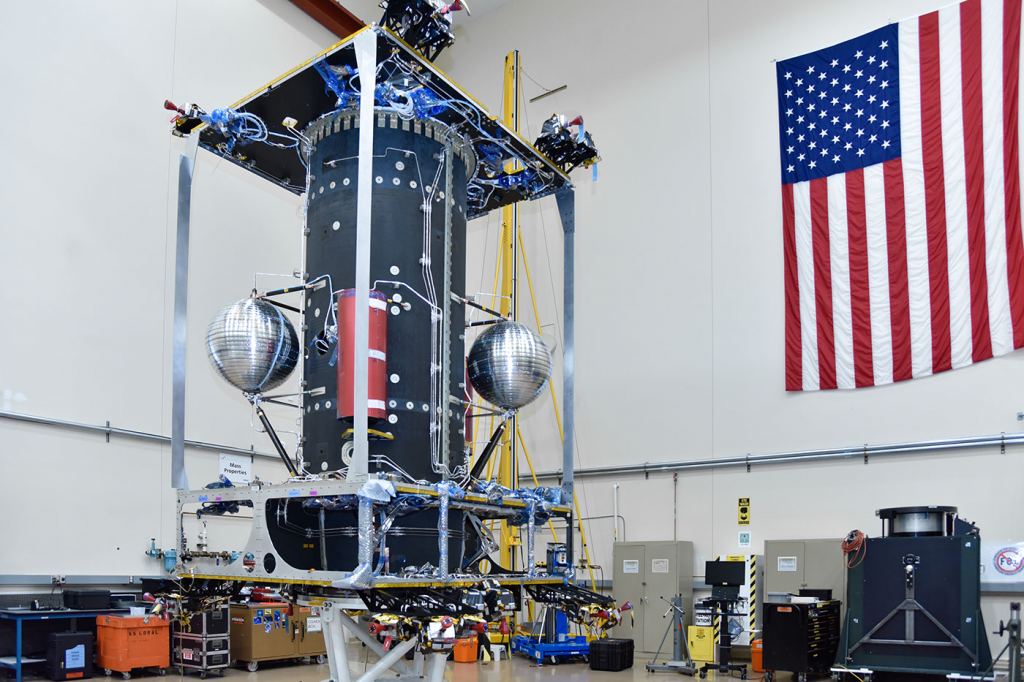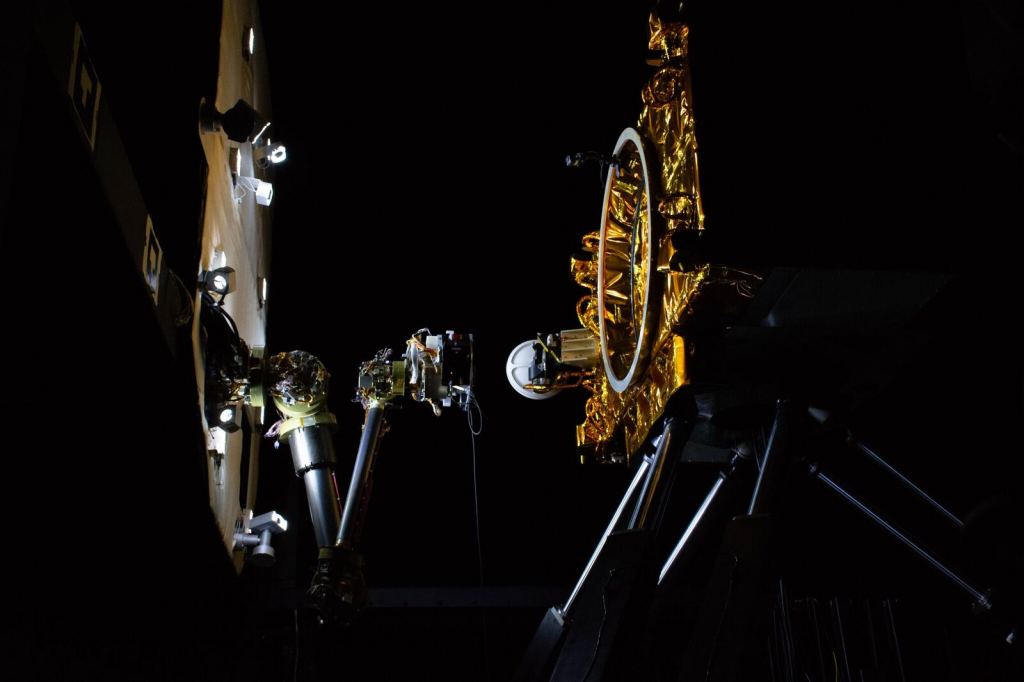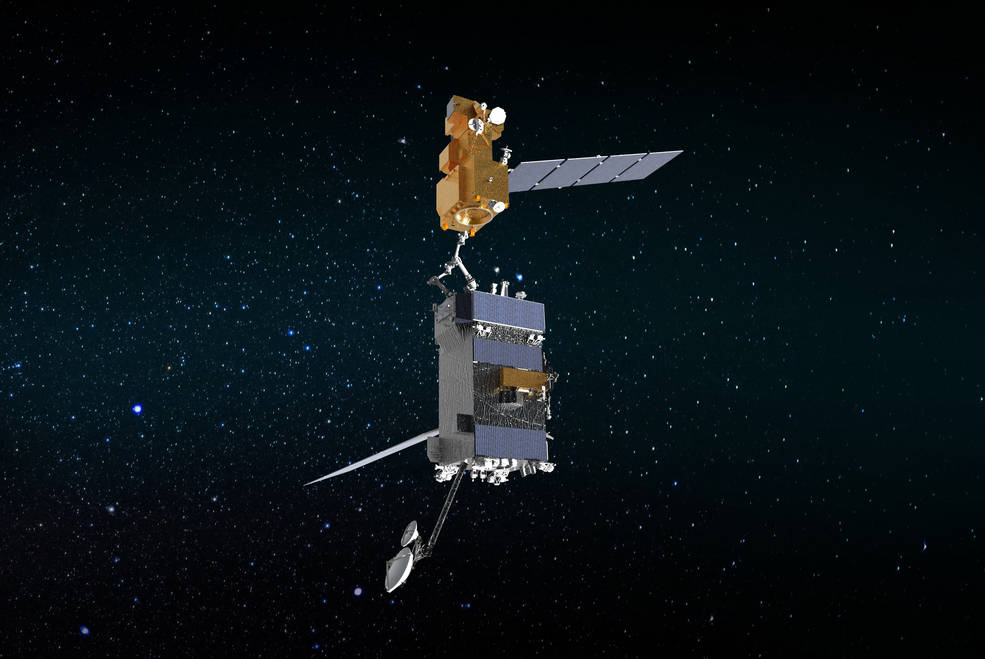NASA is planning a mission to demonstrate the ability to repair and upgrade satellites in Earth orbit. The mission, called OSAM-1 (On-orbit Servicing, Assembly, and Manufacturing-1), will send a robotic spacecraft equipped with robotic arms and all the tools and equipment needed to fix, refuel or extend satellites’ lifespans, even if those satellites were not designed to be serviced on orbit.
The first test flight of OSAM-1 is scheduled for launch no earlier than 2026 and will go to low Earth orbit to rendezvous, grapple and dock with Landsat 7, an Earth observing satellite that has been in orbit since 1999. The mission will conduct a first-of-its-kind refueling demonstration test, then relocate the satellite to a new orbit. While some parts of the mission are autonomous, human tele-operators will conduct much of the procedures and maneuvers remotely from Earth.

NASA says that repairing satellites – instead of just letting defunct spacecraft drift in Earth orbit — helps decrease space debris to create a more sustainable future for space exploration. In addition, the test flight will assess on orbit robotic assembly and manufacturing, which many see as technology needed for the future, such as doing maintenance during long-duration human missions in our Solar System and constructing and maintaining structures in orbit of the Moon or Mars.
The original idea for a satellite servicing spacecraft is the brainchild of noted NASA engineer Frank Cepollina, who has a history of repairing spacecraft in orbit. He led the teams in charge of planning and choreographing the five servicing missions for the Hubble Space Telescope. He helped design the specialized tools and procedures that astronauts would use to successfully repair and upgrade Hubble, keeping the venerable telescope operating for years longer than projected and allowing better instruments and technology to be installed in each successive mission. He also led teams that developed techniques to repair other satellites during the early days of the Space Shuttle era.
“To me, it is astounding that we would just throw satellites away on orbit,” Cepollina told me in 2016 when I toured the Robotic Operations Center at what was then called the Satellite Servicing Capabilities Office at NASA’s Goddard Space Flight Center. “It seemed we should find a way to fix these satellites for economic reasons and for the scientific benefits we could derive. I wanted to find a way to fix and upgrade satellites.”

Cepollina, now age 85, only recently retired from NASA, but has mentored and trained several generations of engineers, never giving up on his dream of repairing satellites. After several proposals of servicing missions, the concept was officially recognized as a mission and attained ‘line item’ status in NASA’s budget. But there is still much work to be done to be ready for launch by 2026.
“When you do something for the first time, there’s a lot of new technology and procedures, and you inherently run into roadblocks and setbacks, and we are no different,” said Ross Henry, the OSAM-1 Servicing Payload Manager, in an interview with Universe Today. “We are dealing with several new systems, like a new lidar (Light Detection and Ranging) system, a unique propellant transfer system and two robotic arms [one is a redundant backup] that can use eleven unique tools and adapters, each with a specific purpose as part of the mission.”

The primary goal for OSAM-1’s first test flight will be refueling Landsat 7, which is about 705 km (440 miles) above Earth. But since Landsat 7 – like many satellites — were never meant to serviced or even seen again, the OSAM-1 spacecraft can’t just pull up alongside another satellite and hook up the fuel hose.
First, OSAM-1 will need to get close enough for one of the robot arms to grapple Landsat 7, and then perform docking maneuvers, using the original docking clamp or Marman ring on the satellite.
“Then, there is a lot of work we’ll have to do to get access to the fueling site,” Henry explained. “OSAM-1’s remote operators will have to cut into the multi-layer insulation thermal blanketing and move it out of the way to expose the fill/drain valves. But when they were closed out before launch, those valves were covered with lock wires, so we’ll have to go in with specialized scissors and cut those. Plus, there are redundant safety caps we will remove.”
OSAM-1 will carry 122 kg (270lbs) of fuel, and the plan is to transfer 115 kg (250 lbs) of it to Landsat 7, using the robotic arm and a retractable hose system.
Of course, this is all happening while both spacecraft are traveling at about 26,500 km/h (16,500 mph). OSAM-1 carries six rendezvous and proximity operations cameras for use while approaching Landsat 7. An additional twenty-one cameras are part of a specialized vision sensor system to allow the teleoperators to see the operations from every angle, and floodlights provide lighting for work to continue even during orbital night, which happens about every 50 minutes. Landsat 7’s orbital period is 99 minutes.

Goddard’s Robotic Operations Center includes a specialized testbed with black, curtain-lined walls so that when the lights are shut off, it simulates the darkness of space. This allows for fully immersive training with full scale mock-ups of Landsat 7 and OSAM-1.
Previously, this mission was known as Restore-L and focused solely on refueling and repair. But in February of 2019 a new component to the mission was added, called the Space Infrastructure Dexterous Robot (SPIDER).
“This adds the ‘assembly and manufacturing’ portion of OSAM-1,” said Henry. “Once we finish with Landsat 7, we’ll release it and then go off and do the assembly and manufacturing portion.”

Credits: NASA/Chris Gunn
SPIDER includes its own 5-meter (16 ft) long robotic arm, bringing the total number of robotic arms flying on OSAM-1 to three. SPIDER will assemble a functional 3-meter (9-foot) communications antenna, constructed from parts brought along to space, and will demonstrate Ka-band transmission with a ground station.
SPIDER will also manufacture a 32-foot (10-meter) lightweight composite beam to verify the capability to construct large spacecraft structures in orbit.
The development of all the systems, tools and techniques has required input from several areas of technology.
“We have a lot of really niche engineers working with us who know this stuff and do it day in and day out,” Henry said. “Some of our most unique engineers are the robotic folks who know how the arms were built and understand the nuances of the joints and mechanisms – such as what poses you can and can’t put the arm in, or if an elbow joint fails, they know how you can still move the end effector with the six other actuators. We have a really great workforce that has dived in deep on the technical part of this mission for several years. They are all leaders in their field, I don’t think there’s another team like them in the country or maybe even the world.”
Finding a suitable candidate satellite to be the experimental subject for this demonstration mission took several years of negotiations, Henry said, as the requirements were specific and it had to be a government-owned satellite.
“We needed a government agency who was willing to have their satellite be the first to demonstrate this technology,” Henry said. “Landsat 7 fit the bill for a number of reasons. It is in an orbit that is easily accessible, and it is at the end of its mission lifetime in terms of generating science. Landsat 9 has already launched and is being brought into service, so its successor is already up and functioning.”

Landsat 7’s nominal science mission ended on April 6, 2022 and its primary science instrument, the Enhanced Thematic Mapper Plus (ETM+) was placed in standby mode. But its twenty-two years in operation provided has provided substantial data on land cover management and assessment, global change studies, and for mapping.
The funded and baseline mission for OSAM 1 is ‘one and done,’ where once it completes the servicing, refueling and then the assembly and manufacturing portion of the mission, it is scheduled to be deorbited and will burn up in Earth’s atmosphere.
“With that being said, we recognize we are flying a very capable vehicle with fuel available,” Henry said, “so there are many folks who would like to see us do a follow-up mission while we are in orbit. But as of right now, nothing has been announced or funded.”
Henry said he is honored and excited to lead the effort in making Frank Cepollina’s dream come true in having a true satellite servicing “tow truck” in orbit. Cepollina has another dream too, that fleets of these tow truck-like satellites could build structures in space, not only habitats, but large space telescopes with the ability to directly image distant exoplanets, for example.
“What we are demonstrating in the assembly and manufacturing portion is laying the groundwork for future advances in the search for extraterrestrial life and hopefully the colonization of the Solar System, “Henry said. “Decades from now, I think you’ll be able to trace that back to OSAM-1 being the first US mission to demonstrate these capabilities on orbit.”
Lead image caption: Illustration of OSAM-1 (bottom) grappling Landsat 7. Credits: NASA


A contrast of OSAM with the MEV-1 and MEV-2 missions would have been informative here, particularly since it’s being painted as the first to do the job of a “space tow truck.” The MEVs are already on orbit, extending the lives of IS-902 and IS-1002 respectively, which were ALSO not intended to be docked with nor serviced on orbit (they don’t even have a Marman ring). Also, the MEVs are capable of moving those satellites to graveyard orbits before moving on to assist others, which also decreases the threat of orbital congestion and debris.
The big differences here seem to be that OSAM is going to use all of its fuel to actually refuel one satellite (vs just providing maneuvering/stationkeeping for up to 3 satellites for each of the MEVs), and that OSAM will do it in low Earth orbit instead of GEO. Also it appears that the OSAM has more dexterity for certain tasks than the MEVs. The latter were never intended to go on to build orbit habitats, something OSAM sounds like it’s trying to demonstrate and which I am interested to see.
This is great news, finally this service. We could perhaps have saved the Herschel space observatory had we had this before.
I wonder if decendents of this spacecraft will also be able to accommodate sending satellites that can no longer be fixed back to Earth? Maybe they could attach a small rocket with just enough fuel to send them back Earthbound at the appropriate time and entry angle?